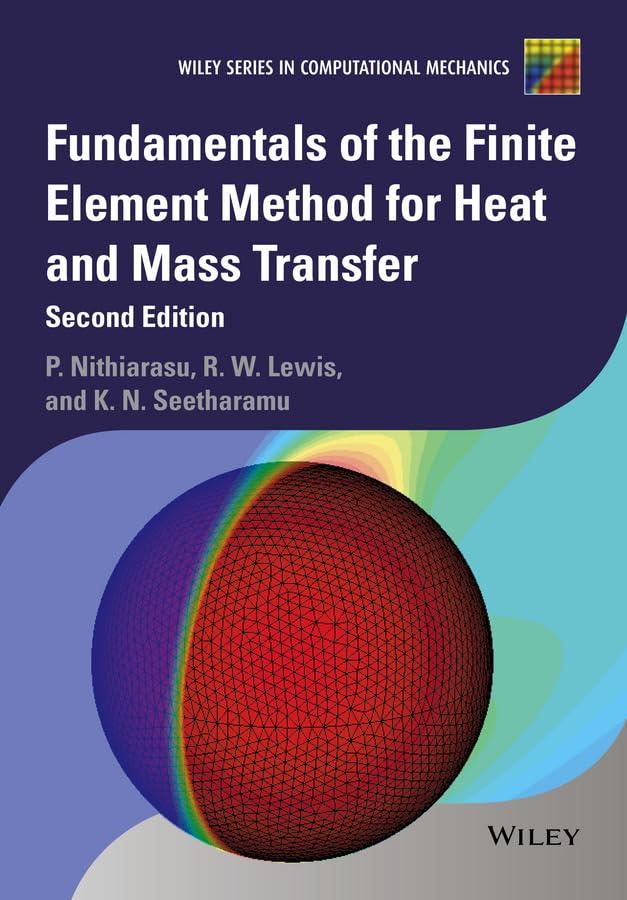The solution for temperature distribution in a linear triangle gives the nodal temperature as (T_{i}=200^{circ} mathrm{C}, T_{j}=180^{circ}
Question:
The solution for temperature distribution in a linear triangle gives the nodal temperature as \(T_{i}=200^{\circ} \mathrm{C}, T_{j}=180^{\circ} \mathrm{C}\) and \(T_{k}=160^{\circ} \mathrm{C}\). The coordinates of \(i, j\) and \(k\) are \(\left(x_{i}=2 \mathrm{~cm}, y_{i}=2 \mathrm{~cm}\right),\left(x_{j}=6 \mathrm{~cm}, y_{j}=4 \mathrm{~cm}\right)\) and \(\left(x_{k}=4 \mathrm{~cm}, y_{k}=6 \mathrm{~cm}\right)\). Calculate the temperature at a location given by \(x=3 \mathrm{~cm}\) and \(y=4 \mathrm{~cm}\). Calculate coordinates of the isotherm corresponding to \(170^{\circ} \mathrm{C}\). Calculate the heat flux in the \(x\) and \(y\) directions at \((x=\) \(3, y=4 \mathrm{~cm}\) ) if the thermal conductivity is \(0.5 \mathrm{~W} / \mathrm{m}^{\circ} \mathrm{C}\). Also show that the sum of the shape functions at \((x=3 \mathrm{~cm}, y=4 \mathrm{~cm}\) ) is unity.
Step by Step Answer:

Fundamentals Of The Finite Element Method For Heat And Mass Transfer Wiley Series In Computational Mechanics
ISBN: 272391
2nd Edition
Authors: P. Nithiarasu, R. W. Lewis, K. N. Seetharamu





